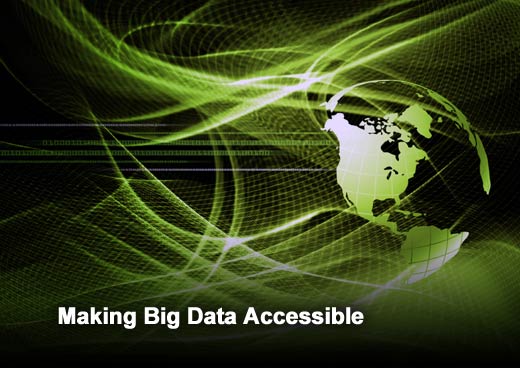It’s no mystery that Big Data has the power to solve a number of known problems and unlock new ways of doing business. What is a mystery – for many organizations – is how to take advantage of the voluminous quantity of unstructured data. International Data Corporation forecasts that the Big Data technology and services market will grow at a 27 percent compound annual growth rate (CAGR) to $32.4 billion through 2017 – or about six times the growth rate of the overall information and communication technology (ICT) market.
While the commercial sector still struggles with how to capitalize on Big Data, military and intelligence organizations have utilized geospatial mapping as a way to corral Big Data and harness its power. In fact, according to Thermopylae, the lessons learned by the public sector may offer tremendous insight into the enterprise.
Click through for ways geospatial mapping can help organizations more successfully unlock the value of Big Data, as identified by Thermopylae.
Why geospatial mapping works
The concept of geospatial mapping is quite simple: Large sets of specific data are overlaid on a digital map, producing an easily digestible and geographical representation of an organization’s critical information. Having the ability to “see” data, as opposed to reading it, allows for faster, more accurate decision-making.
Seeing is knowing
For obvious reasons, battlefield decisions must be accurate and timely. Utilizing constantly updated geospatial mapping technology has enabled more intelligent military decisions based on terrain, location of friendly and non-friendly forces, and various assets in the field. Visualizing this data has allowed for split-second life and death decisions. In commercial use, businesses can visualize where customers are from, where competitors are located in relation to their own facilities and inefficient delivery routes.
Geospatial mapping can show real-time changes to weather, locations of field staff, supply chains impacted by world events and customer patterns. The competitive advantages an organization can attain when armed with real-time location data and visualization are almost endless.
The power of real-time decisions
In combat situations, the effectiveness of a decision is directly impacted by the speed with which it’s delivered, as these situations often change rapidly. Waiting for information necessary to make such a decision can cost lives. Throughout the Middle East and Central Asia, defense organizations could swiftly move information from its point of origin to decision makers and other analysts.
For enterprises, being able to quickly share – and quickly understand – Big Data, and cross-reference it with other Big Data learnings already on hand, allows organizations to establish the validity of the reporting and determine next steps. Acceleration of the delivery, aggregation and visualization of data is necessary to get the largest return on investment. The idea of quarterly charts is becoming more archaic, as technology, such as geospatial mapping, offers the ability to adjust the moment the market changes.
Everyone on the same page
Military commanders in different areas need to know where troops are at all times. Some military organizations use 2D and 3D mapping environments so all their decision makers are operating off of the same picture. The ability for all appropriate decision makers to see the same information in a living, visual format keeps everyone better informed and on the same page.
In the commercial sector, Big Data in a digital, interactive map format positively impacts profit margin because ROI is greatly diluted when data is filtered into a report for a specific topic for one specific element of management. Simple mapping solutions that are democratized and in the hands of everyone in the organization add up to provide a more holistic view that positively impacts the bottom line. The same map that human resources wants to use can be leveraged by the supply chain management analysts. The same map that tracks field staff for managers to assign them to projects can be used to identify the location of loyal customers in order to determine the ideal new store site.
Unsiloed data is powerful
Military organizations need to visualize information across all applicable departments to make missions successful. Too often, information is proprietary to certain departments, but when unified across the organization, a clearer picture emerges. The combination of previously sectored data, when laid upon a geospatial map, is powerful. Natural disaster relief efforts, for example, have benefited from this exact utilization, allowing military organizations to gain a clearer understanding of which areas need the most immediate assistance.
Within the private sector, unified data can show where inefficiencies exist, potential savings, risks, etc. When data is buried in silos, that information is only useful to users in that department. Once unified with all data within the organization, users are now able to see the direct impact data from other departments can have on their projects, and unlock benefits an organization can enjoy at a macro level.
Identification of trends
Once a system to visually explain previously unavailable Big Data is in place, organizations are able to see trends and make decisions that they didn’t have the power to make previously. For example, military organizations were able to see quite clearly new data that pointed to which countries posed the most risk. Further, the technology has opened the door to accurately address previously unanswerable questions, and plan in ways that weren’t available prior to their utilization of geospatial mapping.
That same decision-making power is available to the private sector. Over time, decision makers can document their process over big geo data and start leveraging automated analytics across their corpus of this geo data. This is the real end-state that we envision with big spatial data, where users are getting pushed answers based off of new emerging analytics around the core data that they previously could not access in the first place.









